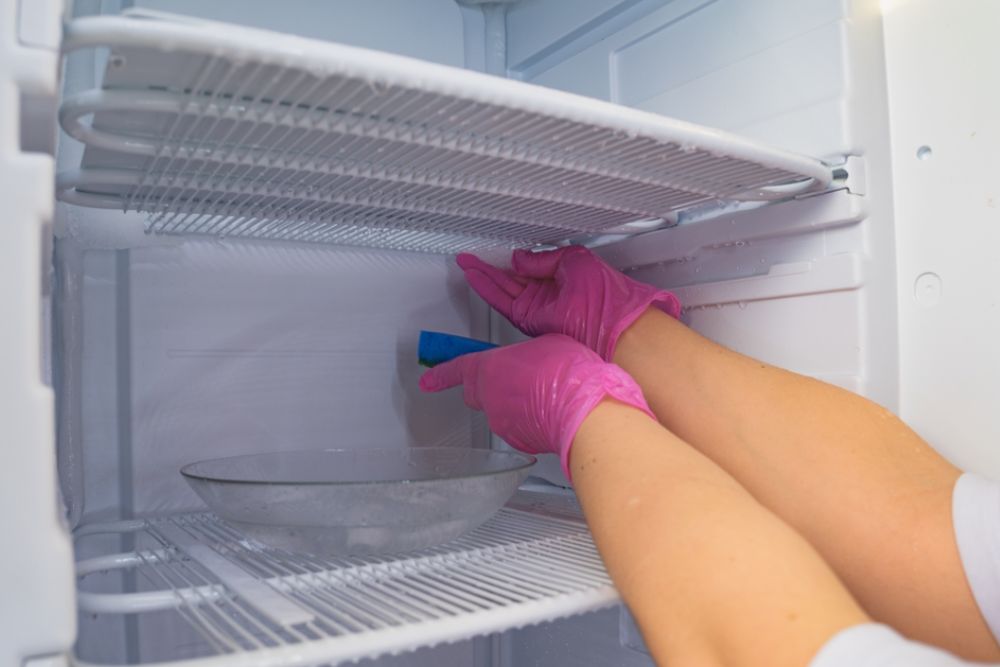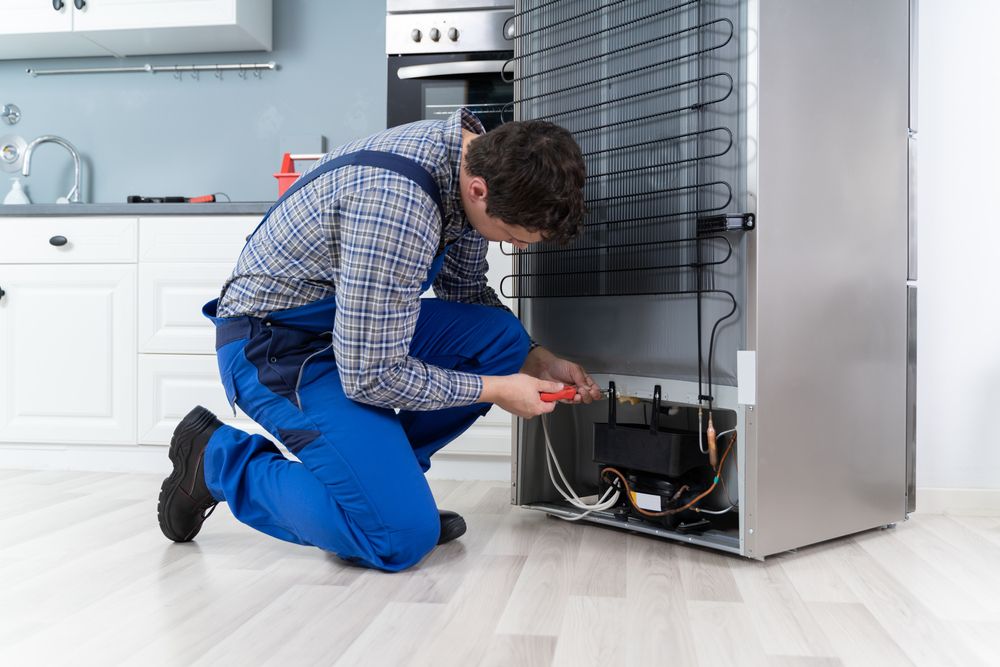Your refrigerator is one of the most important appliances in your home, keeping food fresh and safe to eat. However, like all appliances, it requires regular maintenance to ensure it functions efficiently and lasts for years. Neglecting your refrigerator can lead to costly repairs and higher energy bills. By taking some simple steps to maintain your fridge, you can avoid expensive issues down the line. Here’s how to properly care for your refrigerator to keep it running smoothly:
1. Clean the Coils Regularly
The coils on the back or bottom of your refrigerator are crucial for dissipating heat. If they become dirty, they can't perform efficiently, which may cause your fridge to overheat and work harder to maintain the desired temperature. This can lead to higher energy consumption and potential compressor failure.
- Tip: Clean the coils every six months (or more often if you have pets that shed) using a coil brush or a vacuum with a hose attachment. Make sure the fridge is unplugged before cleaning.
- Impact: Keeping the coils clean helps improve efficiency and prevents the refrigerator from working too hard, extending its lifespan and saving energy.
2. Check the Door Seals
The door seals, or gaskets, help keep cold air inside the fridge and prevent warm air from entering. If the seals are cracked or dirty, your refrigerator has to work harder to maintain a cool temperature, which can lead to increased energy costs and overuse of the compressor.
- Tip: Regularly inspect the door seals for any cracks or damage. Clean them with warm, soapy water and a soft cloth to remove any food debris or grime.
- Impact: Tight, clean door seals ensure your fridge operates efficiently, saving you money on energy bills and prolonging its life.
3. Keep the Fridge at the Right Temperature
Keeping your refrigerator at the correct temperature is essential for both food safety and energy efficiency. The ideal temperature for your fridge is between 37°F (3°C) and 40°F (4°C), while the freezer should be at 0°F (-18°C).
- Tip: Use a thermometer to check the temperature in both your fridge and freezer, and adjust the settings as needed. Avoid setting the temperature too low, as this wastes energy.
- Impact: Maintaining the correct temperature helps preserve your food and reduces the wear and tear on your refrigerator, helping to avoid unnecessary repairs.
4. Keep the Refrigerator Full but Not Overcrowded
A full fridge helps maintain a consistent temperature, as the cold air doesn’t have to work as hard to circulate. However, overloading the fridge can restrict airflow and cause the appliance to work harder, leading to potential breakdowns.
- Tip: Keep your fridge stocked, but avoid cramming items inside. Leave some space between items for air circulation.
- Impact: A balanced, well-stocked fridge works more efficiently, reducing the strain on the motor and cooling system.
5. Clean the Drain Pan and Drip Tray
Most refrigerators have a drain pan or drip tray located beneath the appliance to collect condensation. If the pan is clogged with dirt or food debris, it can lead to unpleasant odors or mold growth, as well as damage to the appliance.
- Tip: Check and clean the drain pan every few months to prevent buildup. Wipe it down with a damp cloth and check for any signs of mold or mildew.
- Impact: Cleaning the drain pan ensures your fridge runs smoothly, helps maintain proper drainage, and prevents odors.

6. Defrost Your Freezer Regularly
If your refrigerator has a manual defrost feature, it’s important to defrost it regularly to prevent ice buildup. Ice can block airflow and reduce the efficiency of your appliance.
- Tip: If you notice ice buildup in the freezer, turn off the fridge and allow the ice to melt. Be sure to place towels around the area to catch any water, and clean it out afterward.
- Impact: Regular defrosting helps keep your freezer running efficiently and prevents excessive wear on the compressor and cooling system.
7. Don’t Block Vents or Airflow
Proper airflow inside the refrigerator is essential for even cooling. Blocking vents inside the fridge can cause temperature inconsistencies and force the appliance to work harder.
- Tip: Make sure the vents inside the fridge are not blocked by food or other items. Keep airflow pathways clear to ensure efficient cooling.
- Impact: Unobstructed airflow helps maintain even temperatures and reduces the strain on the fridge’s cooling system, prolonging its life.
8. Keep Your Fridge Level
If your refrigerator isn’t level, the doors may not close properly, leading to cold air escaping and the appliance working harder. A refrigerator that’s out of level can also cause internal components to wear out faster.
- Tip: Use a level tool to ensure your fridge is sitting flat on the floor. If it’s not level, adjust the legs or use shims to balance it.
- Impact: A properly leveled fridge ensures the doors seal correctly, improves energy efficiency, and reduces wear on the motor.
9. Replace the Water Filter Regularly
If your fridge has a water dispenser or ice maker, the water filter should be replaced regularly to ensure clean water and prevent the buildup of minerals that can affect the appliance’s performance.
- Tip: Replace the water filter every 6 months or as recommended by the manufacturer. Keep track of the time to avoid running the filter too long.
- Impact: A fresh water filter ensures that your fridge dispenses clean water and ice, and helps prevent clogs or damage to the water line.
10. Avoid Overfilling the Ice Maker
While it might be tempting to stockpile ice in the freezer, overfilling the ice maker can lead to blockages and prevent it from working efficiently. This can also cause strain on the fridge’s cooling system.
- Tip: Keep an eye on the ice maker’s capacity and avoid overfilling it. Make sure the ice tray is functioning properly and not clogged.
- Impact: Proper ice maker management ensures it works efficiently, avoiding unnecessary strain on your fridge’s cooling system.
By taking these simple steps to care for your refrigerator, you can keep it running efficiently for years to come, prevent expensive repairs, and lower your energy bills. Regular cleaning, proper temperature management, and preventative maintenance can go a long way in ensuring your fridge operates smoothly, saving you money and hassle in the long run.

